Required Reading
"The Better to Hear You With (My Dear)"
“Brands I Prefer: Everything Else”
“Brands I Prefer: Clay”
Ingredients*
1 oz Apoxie
*Boy howdy, that was a long. I can’t imagine why I’ve left this off the last few tutorials.
Now that we’ve all mastered sculpting ears a few weeks ago, I’d like to talk about how I use ears to add expression to a custom model.
When I started customizing, the standard practice was to carve out plastic ears either by hand or with a dremel. The objective was to preserve the original shape and position, but to make up for the blobular tendency of OF ears at the time. At the time, ears were almost universally pointed forward. Since then, Breyer has introduced multiple new molds with twitchy, detailed, and better looking ears, so the practice has somewhat fallen out of fashion.
I started sculpting my own ears way back when because 1) I thought forward ears were boring and 2) I lacked the manual dexterity to manipulate a dremel into carving a perfectly shaped ear. Okay, it was mostly the latter. I found it quicker and easier to lob off the original ear then stick on a couple replacements.
Typical Expressions
The position you see the most on model horses is ears forward--the neutral position. The ears are symmetrical to each other. If you draw a line from the base of the ear to the tip, it will be completely vertical or angled ever so lightly outward, largely based on the shape of the horse’s head.
I differentiate between this ear position and the pinched forward position:
A horse with his ears in this position is intently interested in what’s going on in front of him. He could be nervous, curious, cautious, or just exceptionally interested (such as a stallion’s way of saying “ooh, was that mare I heard whinny?”)
However, the funny thing about having so many plastic molds with their ears forward is that I don’t think it is particularly realistic to portray almost every Breyer mold with its ears this way. The time an average horse spends with both his ears forward is just a fraction of his typical equine day. You wouldn’t believe how hard it was to snap pictures of horses with their ears forward for this post.
I catch my mare with her ears forward once a week…tops. Granted, her ears are semi-permanently twitched back when I ride. It’s not personal--I use a lot of vocal commands and she listens intently--even though she doesn’t always respond. But she’s listening.
Twitched back is different than pinned back. Pinned back ears means a horse is pissed off and not even bothering to listen anymore. The ears are flattened tight against the neck. When a horse is extra mad, he’ll flatten his nostrils and reach forward with his nose.
The repositioning of his head is important to note as I’ve seen more than a few custom Breyers with pinned ears even though their body language and posture aren’t reflecting the same mood. Horses can still pin their ears while on the bit; however, they can’t physically flatten their ears to the extreme angle I have seen on some customs.
Speaking to that point, a happy horse’s ears are usually fluid under saddle. They twitch to the front, back, and side to focus on the various sounds around them. This position says "I'm listening." The best example is usually a horse out on a trail. A squirrel behind them or a rustling branch in front of them will draw the attention of one ear or the other. It’s a personal preference, but I like an observant trail horse who is aware of what’s around him.
Yes, I took photos of my horse’s head while riding. Not one of the smartest things I've done in the saddle, but not the dumbest thing either (by far.)
When I work on the ears of a horse portrayed performing under saddle, I position the ears at opposing angles. Usually, it’s one ear forward and tipped slightly outward and the other ear two thirds of the way back around listening to the rider.
The Importance of Context
If you’ve been reading my blog for a while, you’ve probably seen both of these gals:
Notice that they both have twitched back ears, yet very different body language. When I was trying to decide how to place the ears on these two, I looked at the overall picture shaped by the original molds while keeping my intended position changes in mind.
I knew I was going to drop Roxy’s head down and on the bit. The original mold is moving at a brisk canter. If I recall correctly, I think she was meant to represent the transition from the lope to the gallop in a reining routine. She’s not out of control, but not what most disciplines prefer to see in an arena. I opted to make her a horse in training (still learning to slow down and collect at the lope), so I flicked her ears back to look like she is listening intently to her rider.
In contrast to the Roxy, Giselle has a hallow back and a strung out gait. In other words, she doesn’t look like she’s moving under saddle or at least not moving well under saddle. I decided to take that idea a little further by adding a swishy tail and twitched back ears. She’s not quite mad enough to pin her ears, but she’s not feeling particularly cooperative with her handler/rider.
Great performance horse? Heck no, but I like adding character to a model when I can. I use context clues to hint at the different directions I can take a mold. I look at tails, head position, and the speed, impulsion*, and collection* of the gait.
*If I lost you here, don’t worry. I will touch on these topics in depth at a later date.
Going back to my roan Indocus from last week...
...he has the typical fluid ear position I prescribe for a performance horse. However, he’s standing--not necessarily performing--and I added a swishy tail. I made a point to paint his eyes looking backward instead of forward. He would look more confident and less concerned about his surroundings if I painted his eyes without the white, but that would have been boring to me. Given the choice between “well-behaved horse” and “full of spunk,” I’ll pick spunk every time.
Thanks to Miss Scarlett for modeling for this tutorial. I took many more photos showing the different possible ear positions. I've put them up on the Facebook page for your perusal.
"The Better to Hear You With (My Dear)"
“Brands I Prefer: Everything Else”
“Brands I Prefer: Clay”
Ingredients*
1 oz Apoxie
*Boy howdy, that was a long. I can’t imagine why I’ve left this off the last few tutorials.
Now that we’ve all mastered sculpting ears a few weeks ago, I’d like to talk about how I use ears to add expression to a custom model.
When I started customizing, the standard practice was to carve out plastic ears either by hand or with a dremel. The objective was to preserve the original shape and position, but to make up for the blobular tendency of OF ears at the time. At the time, ears were almost universally pointed forward. Since then, Breyer has introduced multiple new molds with twitchy, detailed, and better looking ears, so the practice has somewhat fallen out of fashion.
I started sculpting my own ears way back when because 1) I thought forward ears were boring and 2) I lacked the manual dexterity to manipulate a dremel into carving a perfectly shaped ear. Okay, it was mostly the latter. I found it quicker and easier to lob off the original ear then stick on a couple replacements.
Typical Expressions
The position you see the most on model horses is ears forward--the neutral position. The ears are symmetrical to each other. If you draw a line from the base of the ear to the tip, it will be completely vertical or angled ever so lightly outward, largely based on the shape of the horse’s head.
I differentiate between this ear position and the pinched forward position:
A horse with his ears in this position is intently interested in what’s going on in front of him. He could be nervous, curious, cautious, or just exceptionally interested (such as a stallion’s way of saying “ooh, was that mare I heard whinny?”)
However, the funny thing about having so many plastic molds with their ears forward is that I don’t think it is particularly realistic to portray almost every Breyer mold with its ears this way. The time an average horse spends with both his ears forward is just a fraction of his typical equine day. You wouldn’t believe how hard it was to snap pictures of horses with their ears forward for this post.
I catch my mare with her ears forward once a week…tops. Granted, her ears are semi-permanently twitched back when I ride. It’s not personal--I use a lot of vocal commands and she listens intently--even though she doesn’t always respond. But she’s listening.
Twitched back is different than pinned back. Pinned back ears means a horse is pissed off and not even bothering to listen anymore. The ears are flattened tight against the neck. When a horse is extra mad, he’ll flatten his nostrils and reach forward with his nose.
The repositioning of his head is important to note as I’ve seen more than a few custom Breyers with pinned ears even though their body language and posture aren’t reflecting the same mood. Horses can still pin their ears while on the bit; however, they can’t physically flatten their ears to the extreme angle I have seen on some customs.
Speaking to that point, a happy horse’s ears are usually fluid under saddle. They twitch to the front, back, and side to focus on the various sounds around them. This position says "I'm listening." The best example is usually a horse out on a trail. A squirrel behind them or a rustling branch in front of them will draw the attention of one ear or the other. It’s a personal preference, but I like an observant trail horse who is aware of what’s around him.
Yes, I took photos of my horse’s head while riding. Not one of the smartest things I've done in the saddle, but not the dumbest thing either (by far.)
When I work on the ears of a horse portrayed performing under saddle, I position the ears at opposing angles. Usually, it’s one ear forward and tipped slightly outward and the other ear two thirds of the way back around listening to the rider.
The Importance of Context
If you’ve been reading my blog for a while, you’ve probably seen both of these gals:
Notice that they both have twitched back ears, yet very different body language. When I was trying to decide how to place the ears on these two, I looked at the overall picture shaped by the original molds while keeping my intended position changes in mind.
I knew I was going to drop Roxy’s head down and on the bit. The original mold is moving at a brisk canter. If I recall correctly, I think she was meant to represent the transition from the lope to the gallop in a reining routine. She’s not out of control, but not what most disciplines prefer to see in an arena. I opted to make her a horse in training (still learning to slow down and collect at the lope), so I flicked her ears back to look like she is listening intently to her rider.
In contrast to the Roxy, Giselle has a hallow back and a strung out gait. In other words, she doesn’t look like she’s moving under saddle or at least not moving well under saddle. I decided to take that idea a little further by adding a swishy tail and twitched back ears. She’s not quite mad enough to pin her ears, but she’s not feeling particularly cooperative with her handler/rider.
Great performance horse? Heck no, but I like adding character to a model when I can. I use context clues to hint at the different directions I can take a mold. I look at tails, head position, and the speed, impulsion*, and collection* of the gait.
*If I lost you here, don’t worry. I will touch on these topics in depth at a later date.
Going back to my roan Indocus from last week...
...he has the typical fluid ear position I prescribe for a performance horse. However, he’s standing--not necessarily performing--and I added a swishy tail. I made a point to paint his eyes looking backward instead of forward. He would look more confident and less concerned about his surroundings if I painted his eyes without the white, but that would have been boring to me. Given the choice between “well-behaved horse” and “full of spunk,” I’ll pick spunk every time.
Thanks to Miss Scarlett for modeling for this tutorial. I took many more photos showing the different possible ear positions. I've put them up on the Facebook page for your perusal.

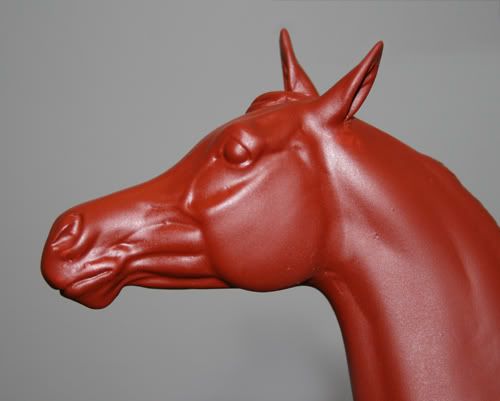
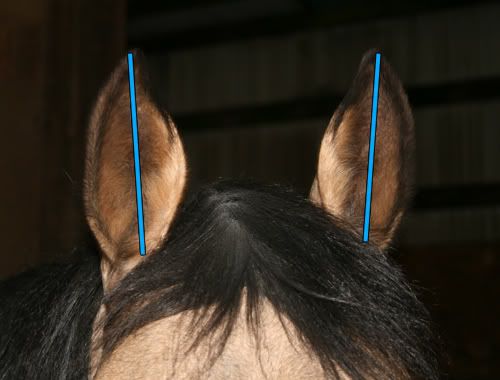
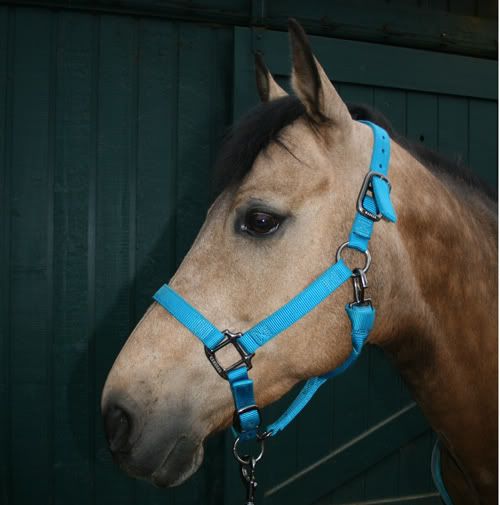
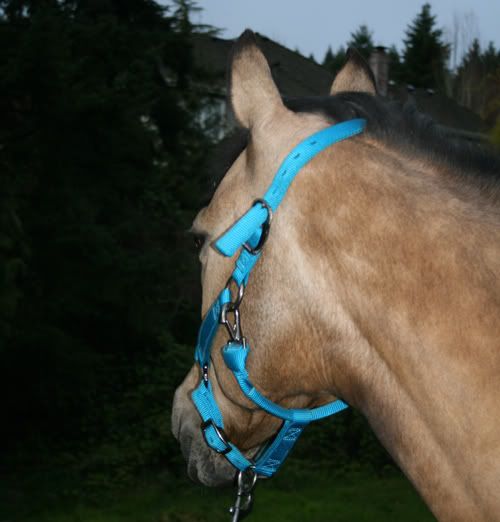


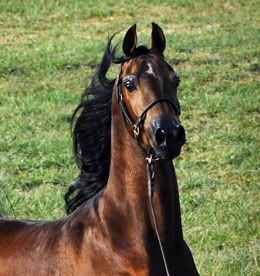
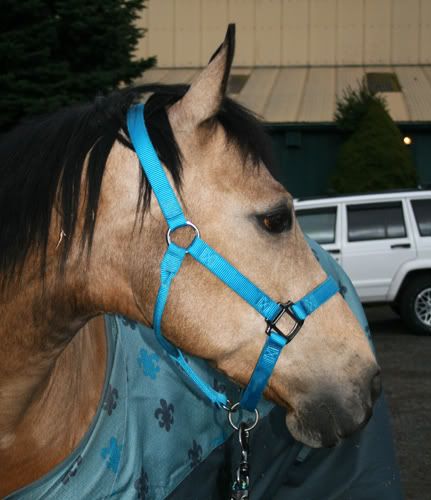



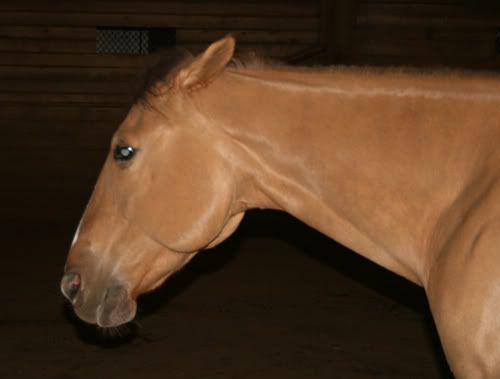
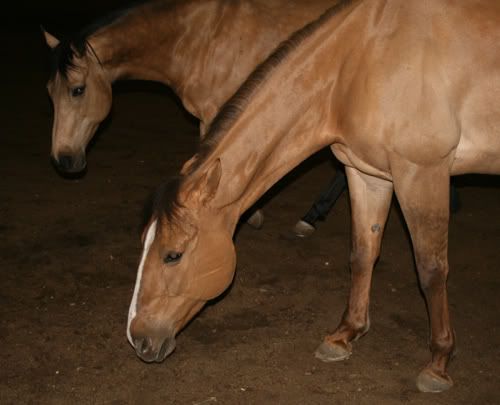
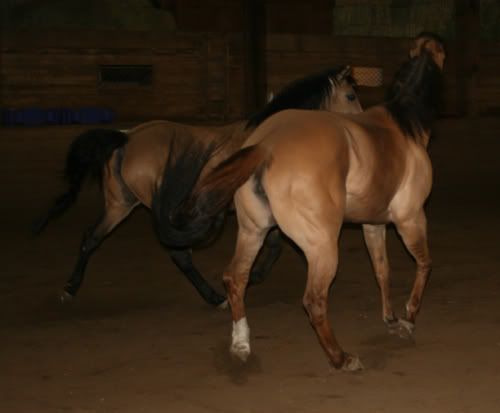
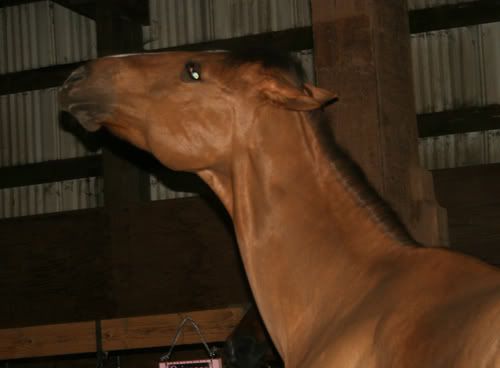
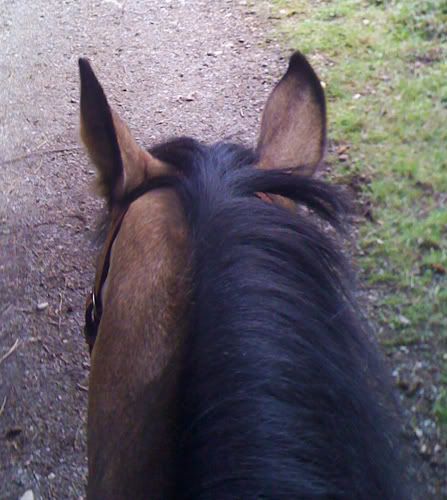
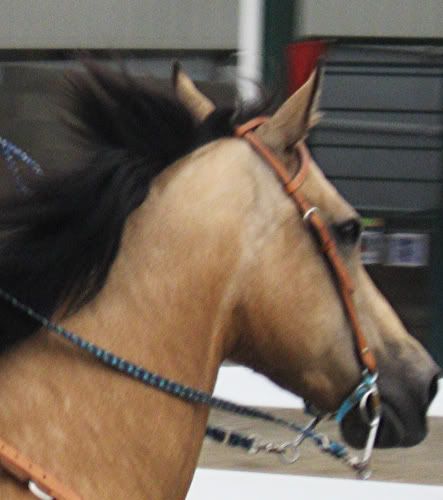

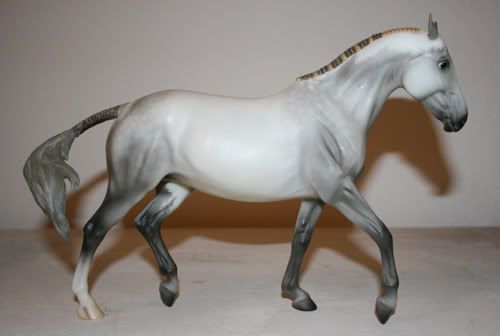
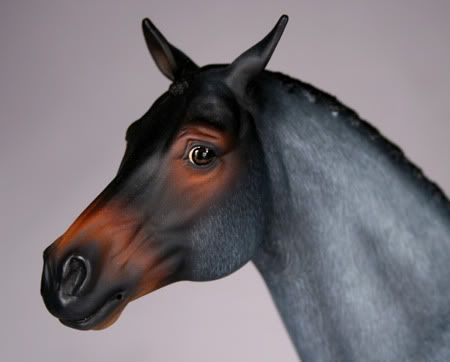
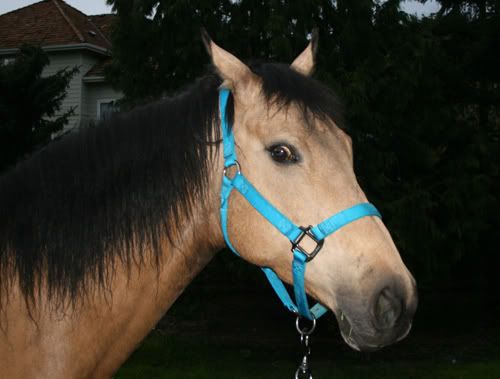






5 comments:
This last picture is awesome! Maybe a tutorial on tongues sometime?
I'd say a tutorial on mouths in general!
That's a great suggestion. Knowing me, there will be one of tongues, one on teeth, one on opening mouths and so on. ;)
Great post - love the pics!
leading exporters of lab equipment eg:Botany and other Ear Custom Models since 1954 in india Ear Custom Models
Post a Comment